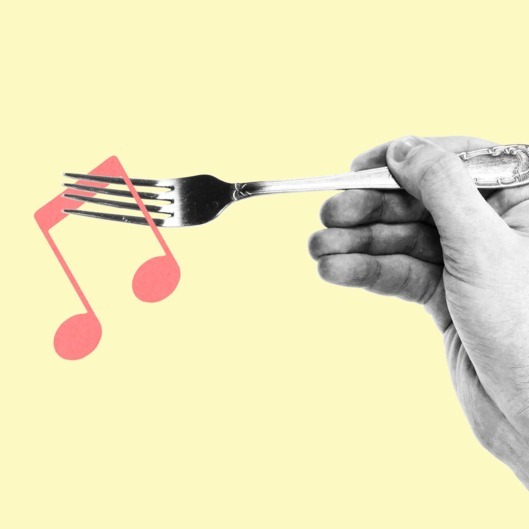By Tanya Basu
In 2004, Charles Spence, a professor of experimental psychology at Oxford University, published the first of many papers that marked him as the premier expert of the way sound and food work with our minds to create illusions of taste. He found, for example, that simply amping up the crispy sounds of a chip made otherwise-plain Pringles taste extraordinary. Rather blandly titled "The Role of Auditory Cues in Modulating the Perceived Crispness and Staleness of Potato Chips," the paper was anything but, fundamentally changing not only the way potato chips are created and marketed but also creating a niche field that Spence has become the leading expert in: how corporations tease your mind to make food seem more appetizing.
One of the least understood but most fascinating ways to do so is with sound. Dan Pashman, host of The Sporkful podcast, teamed up with Spence in a recent episode that explored sound, food, and their interplay in the recent episode "Why You Should Listen to Your Food."
Try the experiment yourself. Grab a dark-chocolate bar or mug of coffee (some plain, no-nonsense beer will also work). Take a bite or sip, and really consider the flavor before you swallow -- is it sticky sweet? Slightly bitter? Acidic?
Once you've figured out how your chocolate/coffee/beer tastes in its normal state, take another bite and chew or swish thoughtfully while listening to this sound clip (it's subtle, so take a real listen/taste):
Got that? Take another sip/bite and listen to this clip now:
What you should have experienced is a nearly magical 360-degree taste evolution: The first clip should have made your bite or sip taste more bitter; the second clip should have made it taste sweeter. And yet the sip or bite in your mouth is from the same food.
How does that work? It's what Spence calls "sonic seasoning." Your brain has a previous conception of what bitter and sweet flavors should taste like, so when you take a bite of food, you have an expectation of where that food should be classified on the bitter and sweet scale. "Your brain cannot deal with so much information, [so] by playing that high-pitched music, [it] draws your attention to that sweet taste," he said. That sweet taste is actually a 10 percent jump in sweetness.
Taste and flavor is an illusion, Spence argues, defending his work from being accused as "tricking" consumers. Indeed, British Airways has adopted Spence's work into a playlist designed to improve the taste of food at high altitudes, and restaurant critics have long included noise levels as measures of their dining experience. Maybe you should think twice before blasting Justin Bieber at dinner tonight or taking your date out to that bumpin' new café where you can barely hear them; after all, your taste buds depend on it.
[WNYC]
More from Science of Us:
